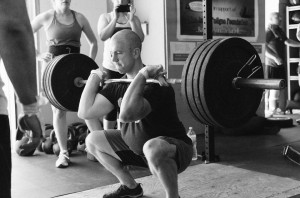Physio Health Advice > What are Spondylolysis and Spondylolisthesis?
One of the primary roles of the spine is to protect the spinal cord. This means that the spine needs to be strong while maintaining the flexibility required for a movable trunk. While the spine is very sturdy, spinal injuries do occur. Health professionals often use terms to describe and classify injuries of the body, two of these terms that you may have heard are Spondylolysis and Spondylolisthesis.
What are they?
Spondylolysis refers to a stress fracture of the pars interarticularis of the vertebra. This is the part of the vertebra that connects the body of the vertebra with the rest of the vertebra that surrounds the spinal cord. A separation of this fracture where the body of the vertebra is displaced forwards or backwards is called a spondylolisthesis.
Spondylolisthesis is a progression of spondylolysis and is given grades to classify its severity. Both spondylolysis and spondylolisthesis commonly affect the fourth and fifth lumbar vertebrae, found at the base of the lower back.
What are the causes?
Spondylolysis and spondylolisthesis can be a result of trauma with the spine being moved forcefully into extension, particularly in younger people. Certain sports such as gymnastics, football and weightlifting require repetitive backward movements of the spine and this can eventually lead to a stress fracture of the pars interarticularis. Growth spurts in teens have also been known to be responsible for the development of these conditions.
In older adults, common causes of spondylolysis or spondylolisthesis are degenerative changes in the spine due to aging, osteoporosis, infection or even a tumour. Some people have a genetic vulnerability in this area of their spine making them more susceptible to developing spondylolysis and then spondylolisthesis.
What are the symptoms?
Many people with spondylolysis and spondylolisthesis may be asymptomatic, which means they perform their normal activities without experiencing any symptoms. However, when symptoms do occur, common complaints are pain and tightness, much like a muscle strain, spreading across the lower back. This pain may be eased by bending forwards and aggravated by walking, running or leaning backwards.
In more progressive cases of spondylolisthesis, the shift of the vertebral body can cause narrowing of the spinal canal that can lead to nerve compression. This may cause hamstring tightness and even numbness and weakness of the lower limbs, affecting gait and daily activities.
How can physiotherapy help?
Your physiotherapist will work closely with you and any relevant medical professionals to determine exactly what is needed for your particular condition. Severe instability in the spine may require stabilization surgery, however this is rare and in most cases symptoms of spondylolisthesis can be improved with regular physiotherapy management.
Physiotherapy that focuses on strengthening and improving the flexibility of both the lower back and the abdominal muscles has been shown to have positive effects on both pain and function for those with symptomatic spondylolysis and spondylolisthesis.


